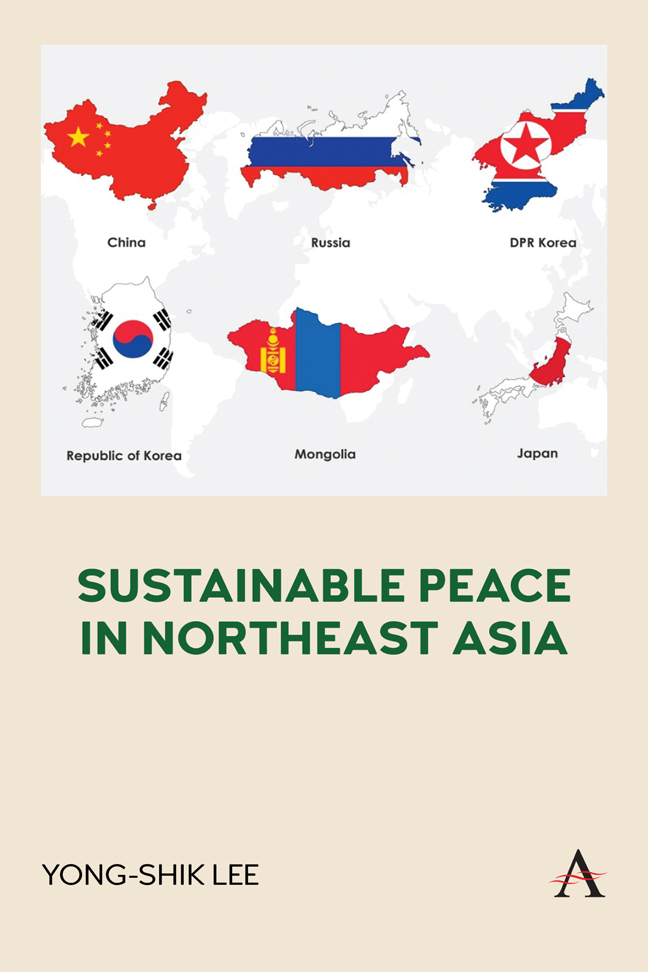Book contents
- Frontmatter
- Dedication
- Advanced Reviews
- About the Author
- Contents
- Figures
- Tables
- List of Abbreviations
- Foreword
- Preface
- Acknowledgments
- 1 Introduction
- 2 The Heritage from the Cold War—North Korea and the Nuclear Crisis
- 3 The New Asian Paradigm or Return to the Old Asia—Rise of China and its Role in the Region
- 4 A New Balancer in the Region? South Korea at the Crossroads
- 5 A Power With Rising Concerns: Escalation of Tensions Between Japan and its Neighbors
- 6 Insiders from the Outside: The United States and Russia
- 7 A Hidden Player: Mongolia and its Role in the Power Dynamics of Northeast Asia
- 8 Pathway to Peace and Stability in Northeast Asia
- Notes
- Bibliography
- Index
4 - A New Balancer in the Region? South Korea at the Crossroads
Published online by Cambridge University Press: 29 February 2024
- Frontmatter
- Dedication
- Advanced Reviews
- About the Author
- Contents
- Figures
- Tables
- List of Abbreviations
- Foreword
- Preface
- Acknowledgments
- 1 Introduction
- 2 The Heritage from the Cold War—North Korea and the Nuclear Crisis
- 3 The New Asian Paradigm or Return to the Old Asia—Rise of China and its Role in the Region
- 4 A New Balancer in the Region? South Korea at the Crossroads
- 5 A Power With Rising Concerns: Escalation of Tensions Between Japan and its Neighbors
- 6 Insiders from the Outside: The United States and Russia
- 7 A Hidden Player: Mongolia and its Role in the Power Dynamics of Northeast Asia
- 8 Pathway to Peace and Stability in Northeast Asia
- Notes
- Bibliography
- Index
Summary
4.1 South Korea: Center or Periphery?
4.1.1 The role of Korea in Northeast Asia: A historical perspective
Historically, united Korea played the role of a regional balancer in Northeast Asia. Since the tenth century, the Korean states such as Goryeo (고려, 918–1392) and Joseon (조선, 1392–1910) had cultural, economic, political, and military engagements with the adjacent powers, including Chinese dynasties, the northern tribes—the Jurchens (Manchus), Khitans, and Mongols—and the Japanese. The Korean states deterred other powers from fully conquering Northeast Asia. For example, the Khitans occupied northern China in the tenth century and subsequently invaded Korea. In 1019, Korea defeated the Khitans (then the strongest military force in Northeast Asia) and destroyed much of their military in historic warfare, preventing their further invasion into China and creating a balance of power in the region. For another example, Japan invaded Korea in 1592 with an ambition to conquer China. After a seven-year-long war, Korea repelled the Japanese invaders with the help of a Chinese expeditionary force, thereby stopping Japan's advance into mainland China and once again maintaining the balance of power in the region.
Korea ceased acting as a regional deterrent when the Qing Empire defeated it in 1637. For the first time in Korean history, the King of Korea formally surrendered to the foreign invader and swore obedience to the Qing. The Joseon Dynasty internally recovered from this defeat, continuing for another two centuries, but Korea lost its military influence in the region. Without Korea as a regional deterrent, the buffer between China and Japan disappeared. Japan waged war against China in 1894 and again in 1937, putting Northeast Asia through years of destructive war. After World War II, Korea was divided into the communist North and the capitalist South, which led to the outbreak of the Korean War. South Korea was at the forefront of East-West confrontations and helped to stop the spread of communism by defending itself from the communist North. The war may have ceased in 1953, but South Korea's struggle with communism did not; for decades, the country withstood continued pressure from North Korea, including numerous military incursions and infiltrations.
Politically, Korea supported a political hierarchy in Northeast Asia described as Sinocentrism.
- Type
- Chapter
- Information
- Sustainable Peace in Northeast Asia , pp. 65 - 90Publisher: Anthem PressPrint publication year: 2023



